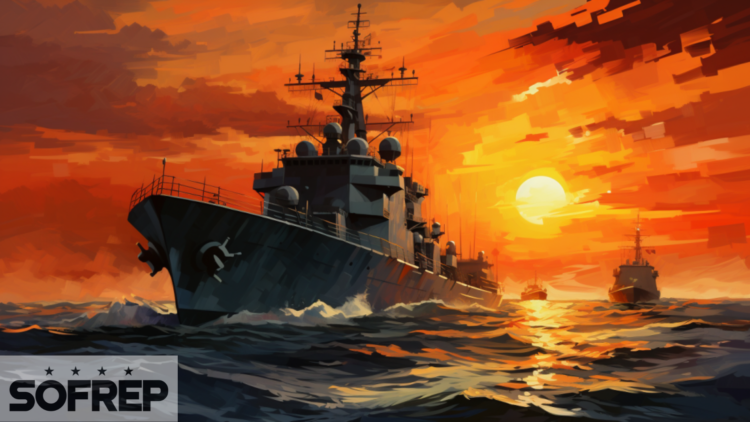In the annals of Soviet history, the Storozhevoy incident of November 1975 stands as a daring testament to the struggle for reform and dissent within the closed confines of the Soviet military.
The mutiny aboard the Storozhevoy, a Soviet destroyer, was spearheaded by Valery Sablin, a political officer on board, and echoed the grievances of many against the oppressive Soviet regime.
This unprecedented act of defiance rippled through the Iron Curtain, exposing the cracks within the Soviet military hierarchy and sparking discussions about reform and democracy.
A Prelude to Dissent
The 1970s marked a period of relative stagnation in the Soviet Union. During this period, the nation grappled with economic challenges, bureaucratic corruption, and a growing disillusionment among its populace.
Against this backdrop of discontent, Valery Sablin emerged as a fervent advocate for change.
Born into a working-class family and growing up a committed Communist, Captain 3rd Rank Valery Mikhailovich Sablin found himself disillusioned with the stark realities of the regime’s corruption and suppression of individual freedoms.
A son of a Navy officer, Sablin entered the Soviet Navy and served in the Soviet Northern Fleet. He was among the brightest, graduating from the elite Frunze Naval Institute in Leningrad in 1960, and also strongly opinionated, never afraid to speak his mind.
With his fervent belief in the principles of Marxism-Leninism, Sablin rose through the ranks and was known for his unwavering commitment to the Party’s ideologies.
Sablin’s Call for Reform
With the chaos stirring the nation, Sablin’s discontentment found voice aboard the Storozhevoy, a Burevestnik-class anti-submarine frigate assigned to the Soviet’s Baltic Fleet.
Here, Sablin held a position as the ship’s political officer, where he would attempt to initiate dialogues about reform within the rigid Soviet system. But because of the impermissible nature of the topic, his efforts were harshly met with indifference or, worse, hostility—particularly from superiors unwilling to challenge the status quo.
Sablin’s dissatisfaction with the system deepened as he yearned for a more democratic and just society. He envisioned a Soviet Union where individual freedoms were respected, corruption was eradicated, and the true ideals of communism were upheld.
Already have an account? Sign In
Two ways to continue to read this article.
Subscribe
$1.99
every 4 weeks
- Unlimited access to all articles
- Support independent journalism
- Ad-free reading experience
Subscribe Now
Recurring Monthly. Cancel Anytime.
Determined to catalyze change and fueled by his vision, Sablin conceived a daring plan: to stage a mutiny and steer the Storozhevoy to Leningrad, rallying the people against the oppressive regime.
The Mutiny Unfolds: A Bold Attempt at Revolution
On the fateful night of November 8, 1975, Sablin, supported by a group of sympathetic crew members, took control of the Storozhevoy.
They intended to ignite a revolution, echoing the people’s aspirations for a fairer and more democratic society. However, their idealistic pursuit encountered the harsh reality of Soviet authoritarianism.
The Soviet authorities swiftly responded to the mutiny.
Other vessels were dispatched to intercept the Storozhevoy, leading to a tense naval chase in the Baltic Sea.
Despite their bold endeavor, Sablin and his supporters faced insurmountable odds, and after hours of intense pursuit, the Soviet Navy regained control of the ship—ending the mutiny and apprehending the dissenters.
Sablin’s Fate: A Harsh Consequence, A Lasting Echo
The unyielding might of the Soviet regime crushed Valery Sablin’s aspirations for reform and democracy.
He was eventually arrested, tried, and initially sentenced to death, a fate eventually commuted to 15 years of imprisonment. His act of defiance, however, reverberated beyond the confines of the Storozhevoy.
The incident sparked discussions and debates across the Soviet Union.
Sablin’s audacious stand against entrenched authoritarianism highlighted the underlying discontent within the military and society at large.
Aftermath: Seeds of Discontent
While the mutiny failed in its immediate objectives, it left an indelible mark, inspiring conversations about the need for reform and the pursuit of greater freedoms.
The Storozhevoy incident underscored the growing rifts within the Soviet establishment.
It became a symbol of dissent, resonating with those yearning for change amidst the stagnation of the Soviet system.
Sablin’s actions, though met with condemnation and suppression, represented a rare instance of courageous resistance against the prevailing autocracy.
In the aftermath of the Storozhevoy incident, the Soviet authorities tightened control and surveillance, fearing further challenges to their authority.
However, the seeds of discontent that Sablin and his comrades planted continued to simmer beneath the surface, contributing to the growing calls for reform that ultimately played a role in the eventual dissolution of the Soviet Union.
~
The Storozhevoy mutiny remains a poignant chapter in Soviet history, symbolizing the struggle for change and the inherent tension between authoritarianism and the yearning for freedom.
Valery Sablin’s bold act of defiance serves as a reminder of the resilience of the human spirit against oppressive regimes, inspiring generations in their quest for liberty and justice.
—
Check out:

